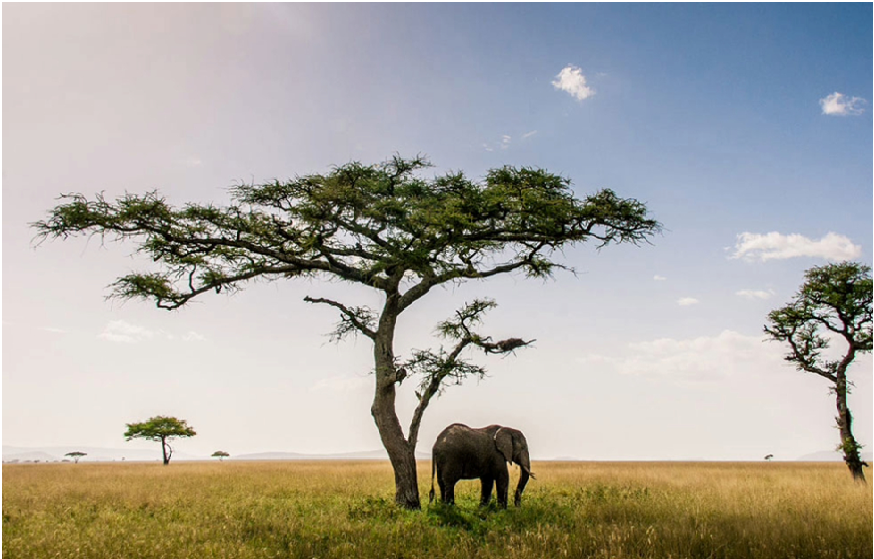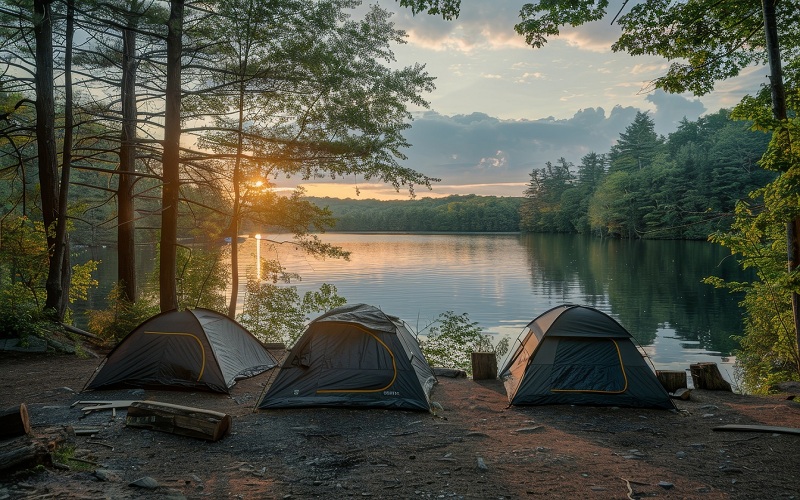The Best Time to Visit Tanzania is usually during the dry season months extending from June to October. During these months, you have the best chance to see Tanzania’s incredible wildlife, especially the awe-inspiring wildebeest migration in the Serengeti.a
Tanzania has two rainy seasons – the ‘long rains’ in April and May and the ‘short rains’ in November and December. These rains can affect safari schedules, with some camps closing during heavy downpours.
Despite this, Tanzania’s Safari areas generally boast warm days and cool nights throughout the year. But, for newcomers, planning your Tanzania Safari Tours during the dry season is advisable for easier wildlife spotting and an overall more comfortable experience.
| TABLE OF CONTENTS
1- Weather as a Deciding Factor 2- Seasonal Highlights in Tanzania 3- Pros and Cons of Each Season 4- Choosing Your Ideal Safari Time |
Weather as a Deciding Factor
Tanzania Climate is distinctly tropical and equatorial. Unlike some tourist destinations with four distinct seasons, the country experiences two main seasons due to itsproximity to the equator and the Indian Ocean. These are the wet and dry seasons, each offering unique experiences for travellers:
Wet Season – November to May
The wet season in Tanzania is characterized by rainy mornings that often lead to sunny afternoons. This season brings the landscapes to life with lush greenery and active wildlife.
Dry Season – June to October
The dry season is marked by sunny, sometimes hot days, ideal for those seeking the classic safari experience with vast, dry landscapes and animals congregating around water sources.
When planning your Tanzania Safari Tours, it’s important to consider these weather patterns. While the dry season might offer more predictable weather, the wet season presents a lush, vibrant landscape and fewer crowds.
Seasonal Highlights in Tanzania
Choosing the Best Month to Visit Tanzania depends on understanding the country’s unique climate patterns. The diverse weather conditions throughout the year can transform the landscape, animal behaviour, and visitor experience, making each season distinct in what it offers to travellers.
January – March
As the year begins, Tanzania welcomes visitors with its warmest weather, particularly in February, which is considered the peak of the hot season. This period is marked by mostly dry days, making it the Best Time for Safari in Tanzania.
Highlights
- Peak temperatures in February, making it the hottest period.
- Generally dry, popular for safaris with potential crowding around New Year.
- Wildlife gathers at water sources, with Tarangire National Park being a highlight.
March – May
Transitioning into March, the atmosphere begins to change as the long rainy season sets in, offering a different kind of Tanzania Safari experience. This time is characterized by afternoon downpours, which bring life to Tanzania’s flora and fauna.
Highlights
- Known as the “long rainy season,” with rains typically in the mornings.
- Lush landscapes and active wildlife, with fewer tourists and potential accommodation discounts.
- Some park roads may be challenging due to mud or flooding.
June – September
Mid-year marks the onset of cooler weather, making it the Best Time to Visit Tanzania for those who prefer milder climates. The landscape dries up, and the visibility of wildlife increases, coinciding with the spectacular Great Migration.
Key Highlights
- Considered the “cold” season, though the weather is pleasant for those from warmer climates.
- Ideal for those avoiding hot weather, with dry conditions conducive to safari activities.
- Popular for witnessing the Great Migration in Serengeti National Park.
October – December
The year rounds off with the short rainy season, introducing brief showers that refresh the landscape without significantly disrupting Tanzania Safari Activities. This season also brings unique natural phenomena, making it a visually stunning time to visit.
Key Highlights
- Short rains occur, with the weather warming towards the year’s end.
- Spectacular natural events like the blooming of jacaranda and Flame Trees.
- December is popular for holiday celebrations, with ideal weather and vibrant landscapes.
Pros and Cons of Each Season
Deciding on the Best Time to Visit Tanzania for your safari depends on your preferences and what you hope to experience.
Every season brings something special to a Tanzania Safari Vacation, each with its own benefits and drawbacks.
Here’s a quick look at what to expect in the dry versus wet seasons, helping you make the perfect choice for your journey.
| Dry Season | |
| Advantages | Disadvantages |
| Favourable weather for safaris and leisure activities. | Potential for crowded parks and accommodations at full price. |
| High visibility of wildlife around water sources. | End of the season may be dusty, requiring some preparation. |
| Ideal for family vacations or honeymoons, coinciding with holiday seasons. | |
| Wet Season | |
| Advantages | Disadvantages |
| Offers a unique perspective of Tanzania with lush, green landscapes. | Some park roads may be inaccessible.
|
| Lower tourist numbers for a more intimate experience. | Varied weather patterns, with a mix of wet and sunny days. |
| Discounts on accommodations, enhancing the value of your trip. | |
Choosing Your Ideal Safari Time
Ultimately, selecting the Best Time to Visit Tanzania for a safari really comes down to what you love. Are you into the lush scenes of the wet season or the classic dry season adventures? Tanzania is going to mesmerize you anyway.
With the greatest wildlife spectacles on Earth, to its tranquil beauty brimming with wild flowers, elephants and hippo’s post-rain, the country awaits your visit.
Match your Tanzania Safari Tours with when you want to go, for a trip that’s extraordinary. There is magic in every season, to make your safari a dream come true.




